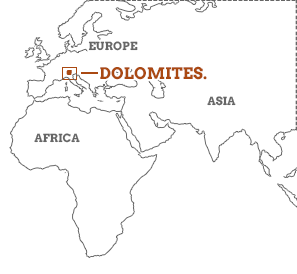There are more remote, lofty and famous ranges, but the Dolomites can’t be beaten for dramatic, jagged peaks. These limestone monsters soar to over 3,000m, with many changing colour, from milky grey to rose-tinted, as the sun glides over them. Nestling at their skirts is a hard-to-resist supporting cast of Alpine meadows, abundant wildflowers, quiet villages, medieval churches and glacial lakes.
![]()
Hugging the border with Austria, Italy's most dramatic mountain range has blended culture to complement its craggy, soaring peaks.
![]()
Looks aren’t all the Dolomites can crow about – its climate is another joy. While most of Europe swelters through summer, rendering activity vacations a sweaty non-option, the Dolomites welcomes walkers, climbers and cyclists to its shady valleys and breezy peaks. And unlike the French Alps, this region cradles both Italian and Austrian culture, expressed in its varied architecture, languages and food. Dine on polenta followed by apfelstrudel, then take to the trails for a summer hike or winter snow shoe odyssey.
Our Dolomites travel guide has more details.























